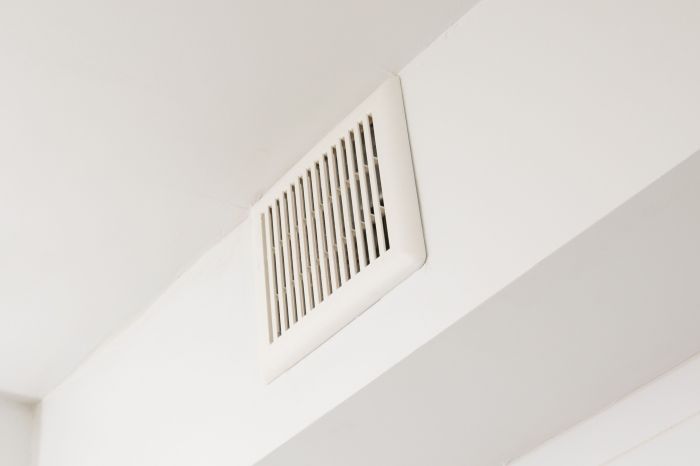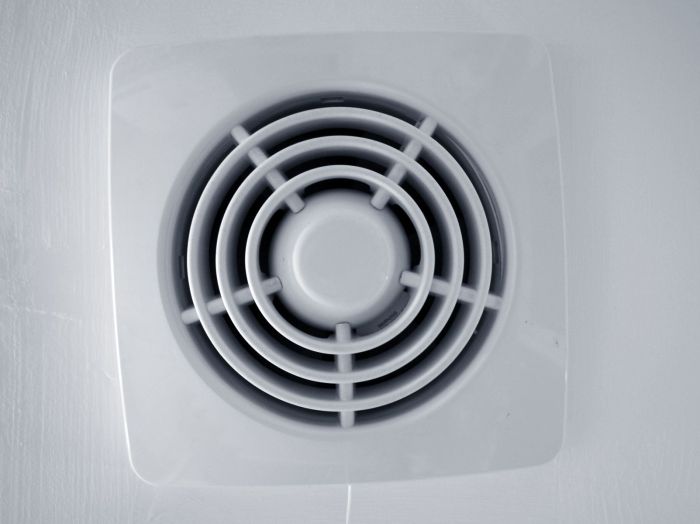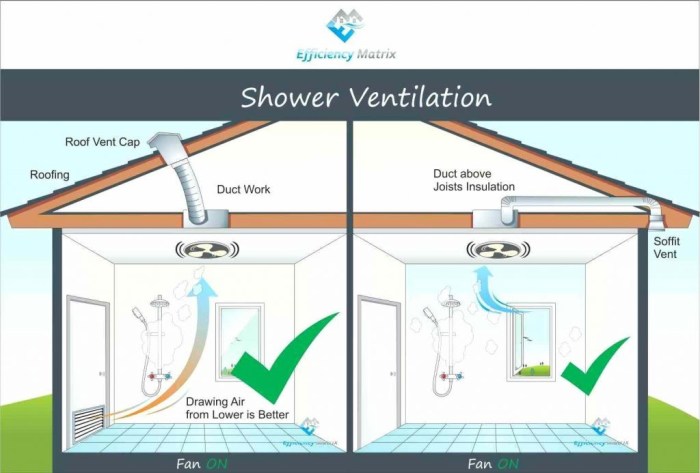Ensuring proper ventilation in bathrooms is crucial for maintaining a healthy and comfortable indoor environment. Bathroom exhaust fans play a vital role in this regard, and adhering to building codes is essential to guarantee their effectiveness and safety. This guide will delve into the importance of compliance with building codes for bathroom exhaust fans, exploring the specific requirements, consequences of non-compliance, and best practices for installation and maintenance.
Building codes establish minimum standards for the design, construction, and maintenance of buildings to ensure safety, health, and energy efficiency. These codes provide detailed guidelines for the installation and operation of bathroom exhaust fans, ensuring they meet specific performance criteria and contribute to the overall well-being of occupants.
Building Codes and Regulations
Building codes are crucial for ensuring the safety, health, and well-being of occupants in buildings. Bathroom exhaust fans are an important component of building codes, as they help maintain indoor air quality and prevent moisture buildup, which can lead to mold and mildew growth.
Specific building code requirements for bathroom exhaust fans vary by jurisdiction, but generally include:
- Minimum CFM (cubic feet per minute) requirement: This ensures that the fan has sufficient capacity to remove moisture and odors from the bathroom.
- Ducting requirements: The fan must be properly ducted to the outside of the building to prevent moisture from being recirculated into the indoor air.
- Electrical requirements: The fan must be installed according to electrical codes to ensure safe operation.
Non-compliance with building codes can have serious consequences, including:
- Health and safety hazards: Inadequate ventilation can lead to poor indoor air quality, which can cause respiratory problems and other health issues.
- Structural damage: Moisture buildup can damage building materials, leading to costly repairs.
- Legal liability: Building owners and contractors can be held liable for injuries or damages resulting from non-compliance with building codes.
Types of Bathroom Exhaust Fans
Bathroom exhaust fans are essential for removing moisture and odors from bathrooms. There are several types of exhaust fans available, each with its own advantages and disadvantages.When choosing an exhaust fan for your bathroom, consider the size of the room, the amount of moisture produced, and the noise level you are willing to tolerate.
Ceiling-Mounted Exhaust Fans
Ceiling-mounted exhaust fans are the most common type of exhaust fan. They are installed in the ceiling of the bathroom and are typically connected to a duct that vents the air outside. Ceiling-mounted exhaust fans are relatively inexpensive and easy to install.
However, they can be noisy and may not be suitable for bathrooms with high ceilings.
Wall-Mounted Exhaust Fans
Wall-mounted exhaust fans are installed on the wall of the bathroom and are typically connected to a duct that vents the air outside. Wall-mounted exhaust fans are more expensive than ceiling-mounted exhaust fans, but they are quieter and more efficient.
Window-Mounted Exhaust Fans
Window-mounted exhaust fans are installed in a window and are typically powered by a cord. Window-mounted exhaust fans are the least expensive type of exhaust fan, but they are also the least efficient.
Inline Exhaust Fans
Inline exhaust fans are installed in the ductwork of the bathroom and are typically connected to a duct that vents the air outside. Inline exhaust fans are more expensive than other types of exhaust fans, but they are the most efficient and quietest.
Maintenance and Troubleshooting
Maintaining your bathroom exhaust fan is crucial to ensure its optimal performance and longevity. Neglecting maintenance can lead to decreased efficiency, noise, and even safety hazards.
To prevent these issues, follow a regular maintenance schedule and address any troubleshooting concerns promptly.
Maintenance Checklist
- Clean the fan cover: Dust and debris can accumulate on the fan cover, obstructing airflow. Clean it monthly with a damp cloth.
- Inspect the fan blades: Over time, fan blades can become dirty or damaged. Check them periodically for any issues and clean or replace them as needed.
- Lubricate the motor: Most bathroom exhaust fans have a motor that requires lubrication. Follow the manufacturer’s instructions for lubricating the motor to reduce noise and extend its lifespan.
- Check the ductwork: The ductwork connected to the exhaust fan can become clogged with lint and debris. Inspect the ductwork annually and clean it if necessary.
Troubleshooting Common Issues
If your bathroom exhaust fan is not working properly, here are some common troubleshooting issues and solutions:
- Fan not turning on: Check if the fan is connected to a power source and that the switch is turned on. If it’s still not working, the motor may be faulty and need to be replaced.
- Fan is noisy: A noisy fan can indicate a problem with the motor or fan blades. Lubricate the motor and check the fan blades for any damage or obstructions.
- Fan not exhausting air: Ensure that the ductwork is not clogged and that the fan cover is not obstructed. If the fan is still not exhausting air, the motor may be weak or the fan blades may be damaged.
Energy Efficiency and Ventilation
Bathroom exhaust fans are rated for energy efficiency based on their airflow capacity and energy consumption. The higher the airflow capacity, the more air the fan can move, and the more energy it will consume. The Energy Star label indicates that a fan meets certain energy efficiency standards.
Bathroom exhaust fans play a crucial role in proper ventilation by removing moisture, odors, and pollutants from the air. Adequate ventilation is essential to prevent mold and mildew growth, which can cause respiratory problems and other health issues. Exhaust fans also help to regulate humidity levels, making the bathroom more comfortable to use.
Tips for Maximizing Ventilation and Reducing Energy Consumption
- Use a fan with an airflow capacity that is appropriate for the size of your bathroom.
- Turn on the fan when you shower or bathe and leave it on for at least 20 minutes after you finish.
- Open a window or door to provide additional ventilation while the fan is running.
- Clean the fan regularly to remove dust and debris that can restrict airflow.
- Consider using a timer switch to automatically turn the fan on and off.
Safety Considerations
When working with bathroom exhaust fans, it is crucial to prioritize safety to prevent potential hazards. Understanding the risks and following appropriate precautions ensures a safe installation and operation of the exhaust system.
Improper installation or maintenance can lead to electrical hazards, fire risks, and health concerns. Therefore, it is essential to adhere to the manufacturer’s instructions and relevant building codes to minimize these risks.
Electrical Hazards
- Ensure the fan is properly grounded to prevent electrical shocks.
- Use a qualified electrician for installation to avoid incorrect wiring or connections.
- Never operate the fan with a damaged cord or plug.
Fire Risks
- Keep the fan clean of lint and debris to prevent overheating and potential fires.
- Install the fan away from combustible materials, such as curtains or towels.
- Do not use the fan to ventilate a room with an open flame, such as a gas stove.
Health Concerns
- Regularly clean the fan to prevent mold and mildew growth, which can cause respiratory problems.
- Ensure the fan is properly vented to the outside to avoid moisture buildup and indoor air quality issues.
- Avoid using the fan excessively, as it can lead to dry skin and eyes.
Last Recap
By adhering to building codes for bathroom exhaust fans, homeowners and contractors can ensure the proper functioning of these essential ventilation systems. Regular maintenance and troubleshooting will further enhance their performance and longevity. Remember, a well-maintained exhaust fan not only provides a comfortable and healthy bathroom environment but also contributes to the overall energy efficiency of your home.
By following the guidelines Artikeld in this guide, you can ensure compliance with building codes and enjoy the benefits of a properly ventilated bathroom.



